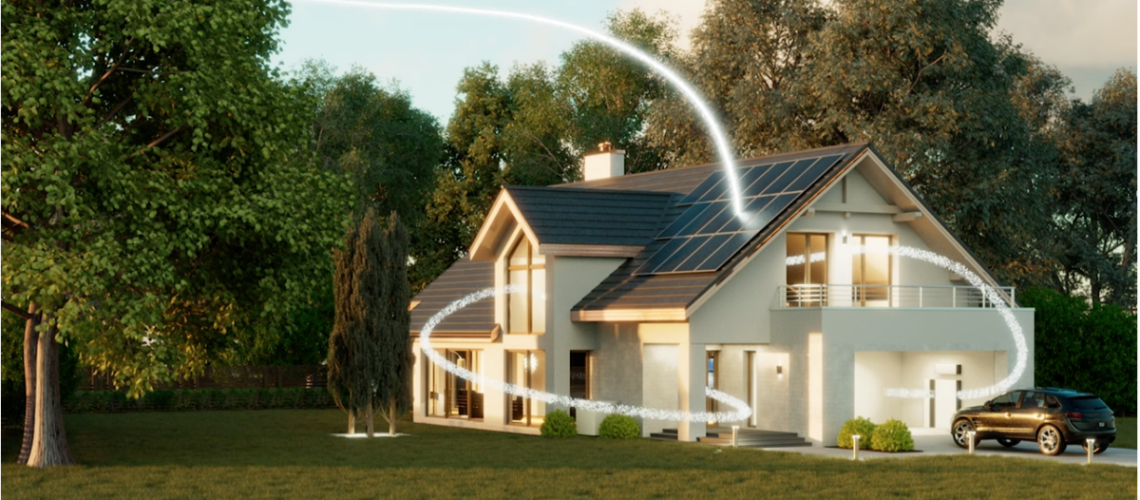Sunnova, a publicly traded energy-as-a-service and residential solar provider, is looking to advance its buildout of virtual power plants (VPP) through a $3.3 billion loan from the Department of Energy (DOE).
The company made an 8-K filing with the Securities and Exchange Commission outlining the purpose of the loan, which would be made available through DOE’s Loan Programs Office. If approved, the funding is expected to “expand access to the Company’s ‘Energy as a Service’ offerings, lay the foundation for future voluntary protection program activities, decrease greenhouse gas emissions, and increase the demand response impact of residential power systems.”
Sunnova seeks an indirect guarantee of 90% of up to $3.3 billion of solar loans. But first, several steps remain for the project to achieve critical milestones, and certain conditions must be satisfied before the DOE issues such a partial loan guarantee, including finalization of a definitive loan guarantee agreement and financing documents. “There can be no assurances that the Company and DOE will consummate the contemplated transaction on these terms or at all.”
The head of the DOE Loan Programs Office, Jigar Shah, has shown a proclivity toward VPPs in the past. In a contributed article for pv magazine USA, he wrote:
“A VPP is a virtual aggregation of distributed energy resources like PV, energy storage, EV chargers and demand-responsive devices (such as water heaters, thermostats, and appliances). VPPs do more than provide decarbonization and grid services – they increasingly give grid operators a large-scale and utility-grade alternative to new generation and system buildout through automated efficiency, capacity support, and non-wire alternatives. By deploying grid assets more efficiently, an aggregation of distributed resources lowers the cost of power for everybody, especially VPP participants.”
Shah’s office sees a lot of promise in VPPs lowering costs and helping U.S. ratepayers better shoulder energy burden. He shared that spending on energy comprises 3.1% of the average U.S. household’s income, but for low-income households, its 8.1%. What’s more, 40% of low-income households spend more than a tenth of their incomes on home energy.
“Lucky for us, the price of renewable energy is less volatile than fossil fuels over time thanks to zero-cost inputs; we do not pay for sunshine and wind,” said Shah. Even with rising costs, the average levelized cost of energy for renewable projects “has begun to compete aggressively” with new fossil fuel based technology projects “even putting tax credits aside,” he said.
Texas VPP
Earlier this month, Sunnova announced a partnership with David Energy, a Brooklyn, N.Y.-based retail energy provider, to deploy a VPP service called Adaptive Retail in Texas.
The VPP leverages Sunnova’s solar and battery storage systems, optimizing fleet interaction of energy assets connected to the electric grid. By aggregating customer resources, the company can provide a more reliable, flexible source of energy that can respond to changes in demand and market conditions.
“Our Adaptive Retail plan represents a significant departure from the traditional centralized power generation model, putting more control and flexibility in the hands of our customers,” said William (John) Berger, chief executive officer of Sunnova.
Sunnova’s fleet of batteries will respond in real time to David Energy’s electricity modeling software platform, dispatching the fleet in response to wholesale electricity market prices. The partnership will allow distributed energy resources to integrate the value of demand response and bid their capacity into the Electric Reliability Council of Texas’s (ERCOT) ancillary markets, tapping into new revenue streams that the company said will help boost customer savings.
“By combining a retail energy plan with software that connects to a broad range of devices many customers already have, David Energy’s platform can turn Texans’ homes into power plants. The potential to bring hundreds of megawatts of much needed flexible capacity to ERCOT via these VPPs in the near future is very real,” said James McGinniss, chief executive officer of David Energy.
ERCOT pilot
In September 2022, ERCOT approved a pilot project to test the efficacy of VPPs to support the grid. The pilot project, ERCOT says, will enable premises with any combination of generation, energy storage, or controllable load with the capability of 1 MW or less to participate in ERCOT’s wholesale markets.
The project will at first enroll up to 80 MW of aggregated resources. Each local aggregation must have the capability to provide at least 100 kW of response, through demand response capability and injection capability. These aggregations will be eligible to provide up to 40 MW of “non-spinning reserve service,” or capacity that can be started or interrupted within 30 minutes as needed.
ERCOT’s goals for the pilot project are to examine how aggregated DERs can support reliability, enhance the wholesale market, incentivize investment, potentially reduce transmission and distribution investments, and support better load management during emergencies.
Following the first one-year phase of the pilot project, ERCOT expects to design additional phases that could expand participation. ERCOT will also study, using data from the pilot project, how different dispatch and pricing schemes could improve its efforts in managing the state’s costly problem of transmission congestion.



